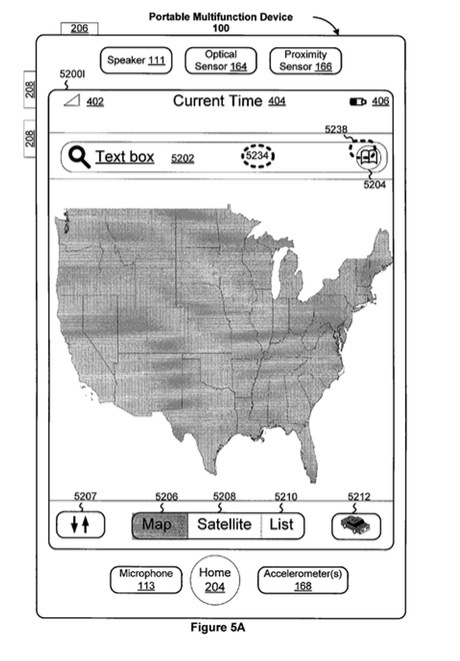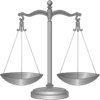Apple has been granted a patent (number 8,302,033) by the U.S. Patent & Trademark Office for a “touch screen device, method and graphical user interface for providing maps, directions and location-based information.” It involves the graphical user interface used in all versions of the iOS Maps app since the software was first introduced in iPhone OS 2.0 and the iPhone 3G in 2008.
Here’s Apple’s background on the invention: “As portable electronic devices become more compact, and the number of functions performed by a given device increase, it has become a significant challenge to design a user interface that allows users to easily interact with a multifunction device. This challenge is particular significant for handheld portable devices, which have much smaller screens than desktop or laptop computers.
“This situation is unfortunate because the user interface is the gateway through which users receive not only content but also responses to user actions or behaviors, including user attempts to access a device’s features, tools, and functions. Some portable communication devices (e.g., mobile telephones, sometimes called mobile phones, cell phones, cellular telephones, and the like) have resorted to adding more pushbuttons, increasing the density of push buttons, overloading the functions of pushbuttons, or using complex menu systems to allow a user to access, store and manipulate data. These conventional user interfaces often result in complicated key sequences and menu hierarchies that must be memorized by the user.
“Many conventional user interfaces, such as those that include physical pushbuttons, are also inflexible. This is unfortunate because it may prevent a user interface from being configured and/or adapted by either an application running on the portable device or by users. When coupled with the time consuming requirement to memorize multiple key sequences and menu hierarchies, and the difficulty in activating a desired pushbutton, such inflexibility is frustrating to most users.
“For example, mapping applications are available for mobile phones (e.g., Google maps for mobile, available at www.google.com/gmm). But navigating in such applications using physical push buttons (e.g., the number keys on a hard keyboard) or touch screens in existing mobile phones is cumbersome for most users. Thus, at present, relatively few people use mapping applications in mobile phones and other portable devices.
“Accordingly, there is a need for devices with touch screen displays that have more transparent and intuitive user interfaces for providing maps, directions, and location-based information. Such interfaces increase the effectiveness, efficiency and user satisfaction with such devices.”
The inventors are Michael Matas, Chris Blumenberg, Andre M.J. Boule, Stephen O. Lemay and Richard Williamson.
Apple has also been granted the following patents:
° Patent RE43,780 for a connector including a first connector element and a second connector element that are coupled into a single unit,;
° Patent 8302210 for systems, computer-implemented methods, and computer-readable storage media for call path enforcement;
° Patent 8302038 for engineering change order language for modifying integrated circuit design files for programmable logic device implementation;
° Patent 8302020 for an authoring environment for creating and/or editing user interface elements such as widgets used in a unified interest layer;
° Patent 8301947 for a method and apparatus for dynamic scan chain grouping;
° Patent 8301943 for a pulse flop with enhanced scan implementation;
° Patent 8300953 for categorization of digital media based on media characteristics;
° Patent 8300941 for techniques for presenting sound effects at a portable media device;
° Patent 8300591 for allocating resources in a frequency-time space to mobile station data;
° Patent 8300056 methods, apparatuses, and systems for seamlessly migrating a user visible display stream sent to a display device from one rendered display stream to another rendered display stream;
° Patent 8300020 for a method and apparatus for tracking coarse and fine motions associated with an electronic input device;
° Patent 8300019 for methods and apparatus for normalizing the effects of the changes to the parasitic capacitive coupling that can occur in touch sensor panels so as to reduce or eliminate the appearance of erroneous touch events;
° Patent 8299825 for an electronic age detection circuit.




